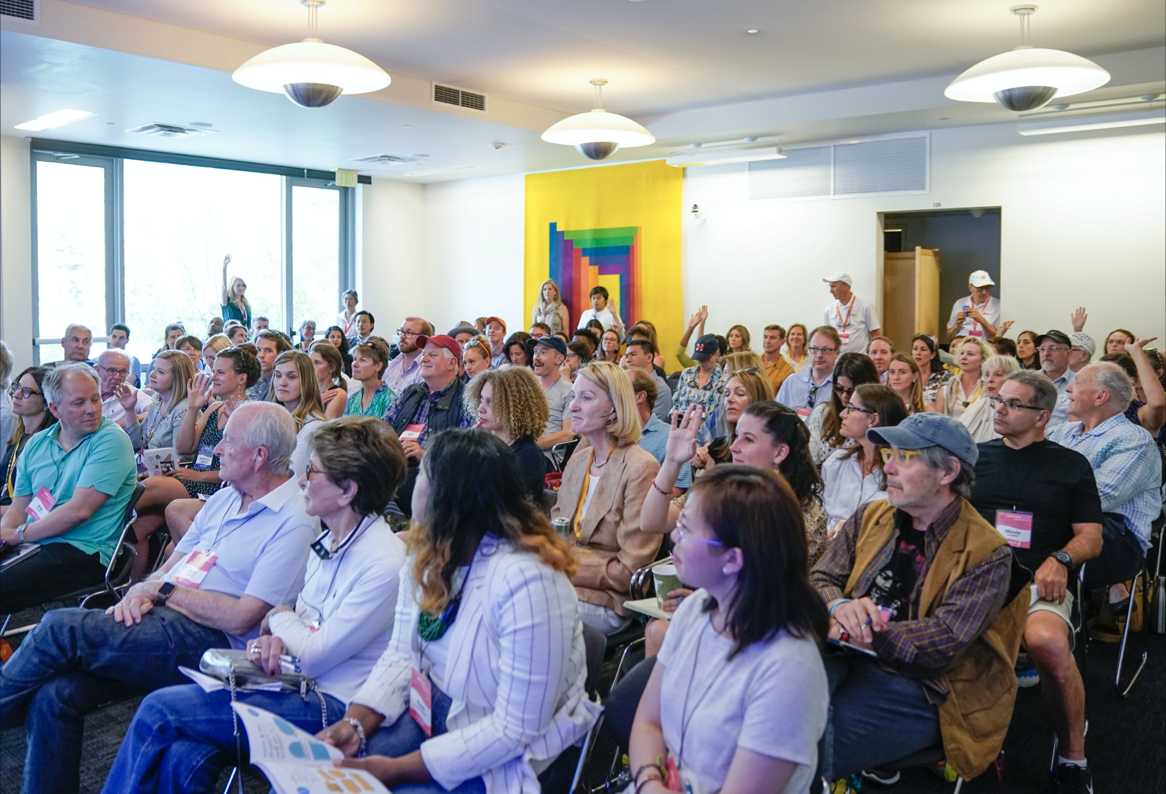
2019 Aspen Ideas Festival Talk
I was one of the speakers at the 2019 Aspen Ideas Festival with Margaret Hagan. We turned the one-hour session into a mini-design workshop and explored the world of meaning-making with the audience. Below you will find our abstract and the interview that I’ve given prior to the festival.
Abstract
How do we create a culture that brings out the best in our personal and professional lives? Rituals are powerful tools for building a culture that better aligns your values and priorities with your everyday practices. Our work shows how rituals help people bridge transitions, get to flow, deal with conflict, and increase bonding. In this session, we’ll share some of the insights from our work, and scope out some culture experiments to run — harnessing the patterns of rituals to think about lightweight, bottom-up ways to build better ways of meaning-making.
Interview
Your book, Rituals for Work, explains how creative rituals can make our lives more meaningful — both at home and at work. Can you give an example of such a rewarding ritual?
Yes, one ritual in the book is called “The Small Moments Jar.” It helps teams build a healthy culture by instilling a habit of recognizing contributions of all shapes and sizes. When a teammate does something great – whether it’s helping out on a deadline, giving a great presentation, or bringing in fancy cupcakes – another teammate writes it down on a small slip of paper and puts it in a jar. The jar is emptied regularly, such as at the end of the weekly all-staff meeting.
The Small Moments Jar can be integrated into the team’s day-to-day routine, with a low threshold of what contributions can be recognized. The Jar should grow weekly, with all kinds of small appreciations. This is the back-stock of positive relationship moments that can then be drawn from to keep a team strong. A team can choose to hold a monthly ritual of reading through the jar’s notes.
Who are these rituals for?
These rituals are for people who want to improve their work lives. When we (myself and co-author Margaret Hagan) were working on the book, we approached it as a design project. We identified four personas. First, people who are hired to work on workplace culture. They might be part of operations or human resources. Operations staff run facilities. The HR department is responsible for keeping employees happy and engaged. The second persona is the manager. They lead a team or a project and know the life cycles, ups, and downs, of a team. They also know what it takes to build and maintain a team. The third persona is designers or coaches who work on organization and service design. They help improve or repair an organization’s culture. Our final persona is an informal leader who takes charge and is intentional about improving work-life. This persona is especially exciting. They are the hidden heroes of the workplace, and we want to hear their stories.
What are the ingredients for a good, impactful ritual?
A good ritual has certain ingredients and mechanics. Based on our research and experiments, we discovered the majority of rituals have three ingredients: intention, a contextual trigger, and a ritual flow (beginning, middle, and end). Intentionality makes or breaks a ritual. If you lose the intentionality, it will turn into a mindless and automatic routine. Ritual is always tied to a specific trigger in one’s schedule: before going to bed, Sunday morning, etc. Finally, a ritual has a script: beginning, middle, and end.
A good ritual has a je ne sais quoi quality that differentiates it from the mundane and the obvious. It involves a symbolic prop that helps people invest meaning. A ritual is flexible and evolves over time based on the needs of its participants.
Impactful rituals sync people so they feel a sense of togetherness and flow. To get to this synchronicity, some rituals rely on social technologies, such as sharing food, the use of masks and costumes, and the use of music. Meaningful rituals create emotional energy that moves and elevates people.
Read the rest of the interview on the Aspen Ideas Blog.

